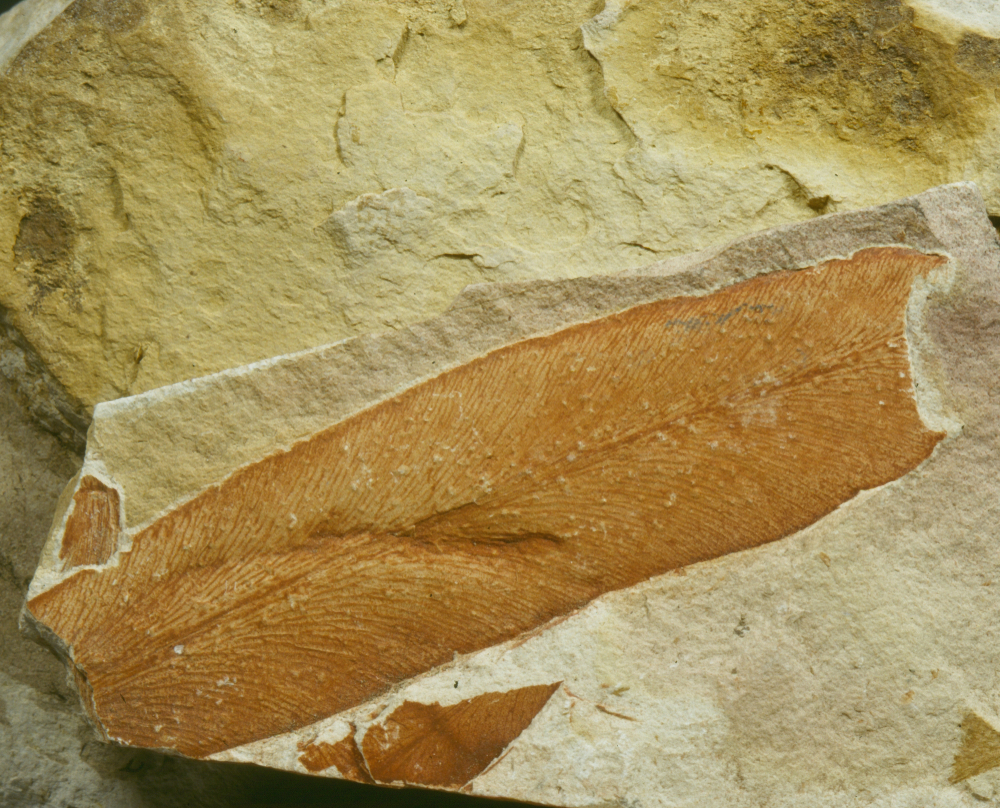4 Facts About Glossopteris Fossils
Posted on Categories Discover Magazine

Fossils provide important insights about the existence and adaption of living organisms — over millions of years. Ancient plant fossils provide clues about climate conditions and environmental change.
Among the most interesting are Glossopteris leaf fossils, which have been found in Africa, South America, Australia, Antarctica, and parts of Asia — mostly India. With more than 70 identifiable species, this once prevalent plant is a valuable information source on Earth’s conditions, long before animal or human life.
1. Glossopteris Refers Specifically to the Leaves
The name comes from the Latin words “gloss(o),” which means tongue, and “pteris,” which means fern. The name reflects the appearance of the leaves, which are tongue-shaped and part of a plant in the fern family. The leaves had reticulate venation, a web-like pattern of interconnected veins. They also had a prominent midrib, which is a thick vein that runs down the center.
What Does Glossopteris Mean?
Though Glossopteris officially pertains to the leaves, the name has become associated with the plant when referencing the shrubs and trees that contain the leaves. And despite its name, it wasn’t a true fern — but actually a seed fern. The leaves ranged in size from about an inch (about 2.5 centimeters) to a mature length of almost one foot (about 30.5 centimeters) long — while the plants grew up to almost 100 feet (about 30.48 meters) high.
Read More: Why Do Leaves Turn Red in Autumn?
2. Glossopteris Fossils Support Continental Drift Theory
Glossopteris existed from the late Carboniferous Period and throughout the Permian Period — possibly into the very early Triassic Period, when Earth was one supercontinent. Because researchers found Glossopteris fossils on multiple continents, this led geologist Eduard Suess to hypothesize that continents were once a giant land mass that he named Gondwana. Eventually, Gondwana became the southern half of Pangaea.
What Is Glossopteris in Plate Tectonics?
Later, German scientist Alfred Wegener formed the theory of continental drift — which hypothesized that the continents separated and drifted to other locations. The far-reaching distribution of Glossopteris provided integral evidence to support the idea of continental drift. Fossil records eventually led to the concept of plate tectonics, which provided a scientific explanation of why the continents moved (along with other natural events).
Read More: Continental Drift: A Revolutionary Theory That Was Once Considered Pseudoscience
3. Seed Dispersal Is a Subject of Interest
Plant seeds are spread through several methods of dispersal, including water (hydrochory), wind (anemochory), and gravity alone (barochory). Glossopteris seeds were too heavy and bulky to have drifted across oceans or to have been carried by the wind to another continent.
How Did Glossopteris Spread?
This means their seeds were most likely dispersed by barochory. This would have occurred at a time when the continents were joined together — thus enabling such a wide range of distribution. The Glossopteris that grew during this time were almost certainly deciduous, losing their leaves in fall and growing new leaves in spring. This concept is based on the presence of heavily layered Glossopteris leaf fossils.
Read More: With Climate Change, Evergreen Trees May Begin to Take Over America’s Forests
4. Volcanic Activity Led to Extinction
Of the five mass extinction events, the Permian-Triassic event was the most catastrophic. It was so cataclysmic that it’s been called “The Great Dying.” Created by volcanic eruptions in what is modern-day Siberia, it’s estimated that the event caused the death of 75 percent of terrestrial life and upwards of 90 percent of sea life.
Why Did Glossopteris Go Extinct?
Glossopteris was one of the plants negatively impacted by the event and its aftereffects. Enormous amounts of greenhouse gases were released, causing a rise in atmospheric temperatures. After struggling to survive the resulting hot and dry temperatures, the devastating climate change eventually led to the extinction of Glossopteris.
Read More: The Late Permian Mass Extinction Explained